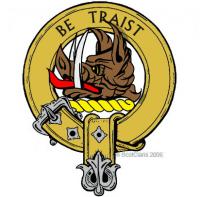
Clan Innes
Innes was a barony consisting of all the land along the shore between the River Lossie and the River Spey in Morayshire. A charter for these lands was given to Berowald, described as Flandrensis, by Malcolm IV in 1154. Berowald’s grandson, Sir Walter, took Innes as his name and the charter was confirmed by Alexander II in 1226.
In the 1300s, Sir Robert, 9th of that ilk, married and added to the family estate the thane of Aberchirder. Their son, Sir Walter, ruled the family for fifty-six years till his death in 1454.
Numerous branches had, by this time, successfully reached out all over Northern Scotland, and between the years 1493 and 1533, Alexander, 18th of Innes, had amassed six charters to a considerable amount of land. He was murdered by the 3rd Laird of Invermarkie over a romantic dispute and a terrible feud between the two families ensued.
The Scottish Privy Council recognised the Innes family as a clan in 1579.
The 20th Chief, Sir Robert, became the first Baronet in 1625 and was a supporter of Charles II.
The 19th Baron was a known practitioner of witchcraft.
In 1767, the 6th Baronet, Sir James, sold the Innes lands to the Earl of Fife and settled in England. Because of the hysteria of the Reformation, many of the mediaeval records of Scotland were smuggled to France for safety. An Innes, Father Lewis, became the Principal of the Scots College in Paris, to where many of the precious documents were taken. With the help of his brother Thomas, the papers were arranged, collated and preserved, they also wrote 'The Life of James II'.Despite his exile, Lewis held the position of Secretary of State for Scotland in 1690. The recovery and protection of Scotland’s historical papers was continued by Cosmo Innes, Sheriff of Moray in 1840, who became a Professor of Edinburgh University.
The brothers’ invaluable work is acknowledged today in The Innes Review.








